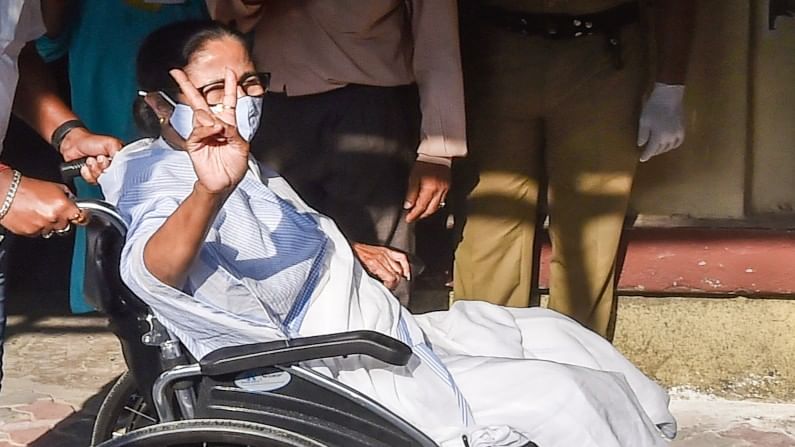West Bengal elections result 2021: Wallet welfare for common man in Trinamool Congress manifesto
With Mamata Banerjee's party firmly back in power, the common man has quite a few welfare schemes to benefit from

With Trinamool Congress (TMC) back in power in West Bengal for the third time, it is going to be a bonanza for the common man in the state, if the manifesto of the party is any indication. Going by the promises made in the assembly election manifesto, the common people of Bengal would have quite a bagful of goodies along a wide front from direct cash support to free rides in government buses.
The manifesto was announced by chief minister Mamata Banerjee on March 17.
Universal basic income
The first infusion that one can look forward to is a direct annual cash support of Rs 6,000 per family which will be double that amount if the family belongs to the scheduled caste or scheduled tribe. It is a basic universal support and will be paid to all families below the poverty line.
According to TMC, the state’s monthly average consumption is Rs 5,249 and the basic assistance of Rs 600 would be 10% of that amount for a general category family and for a SC or ST family the amount would be more than 20% of the monthly consumption.
The money would be paid to the female heads of 1.6 crore families. The support would be available to all households except those who have at least one Income Tax paying member and those owning land more than 2 hectares.
TMC has calculated an annual expenditure of Rs 12,900 crore every year on this count.
Cheap education loan
Students have been promised education loan of maximum Rs 10 lakh at an interest rate of 4%. This would be of substantial benefit to students of the state since the market rate of education loans starts from 7.30% and can go up to 10%-11%.
“Unlike a loan that is drawn as a lump sum, a Student Credit Card will provide money to students on demand at their convenience benefiting more than 1.5 crore students over the next 5 years,” read the manifesto.
More cash for farmers
Farmers – there are 68 lakh small and marginal farmers in Bengal – will be given Rs 10,000 per acre under a Krishak Bandhu Scheme. This annual cash assistance scheme now pays Rs 6,000 to an eligible farmer.
Under this scheme an amount of Rs 2,647.89 crore has so far been disbursed benefitting 46.76 lakh farmers, says the manifesto.
The number of farmer households in the state is 71.23 lakh. Of this number 96% are small and marginal farmers. On an average a farmer holds 0.77 hectare of land in the state.
Reduced food bill
The party has also promised free ration to all eligible families. What started as a measure to mitigate hardships of BPL families during the pandemic in 2020, was set to end on June 30 this year. However, the manifesto has promised that the benefit will continue.
The government is supposed to allocate Rs 1,500 crore under this head in FY22.
Drawing on the Amma canteen model from Tamil Nadu, Mamata Banerjee has also promised as many as 75 crore subsidised meals at Rs 5. These would be distributed through 2,500 canteens across 50 towns in the state.
Women in focus
Women have been promised a lot of benefits in the TMC manifesto. Loans on easy terms will be given to 10 lakh new self help groups of women from the economically weaker sections. Loans totalling to Rs 25,000 crore will be paid over the next five years from banks.
Apart from these new benefits there are a number of continuing welfare schemes, the most significant of which is perhaps Kanyashree, which is a conditional cash transfer scheme for the benefit of the girl child. One the one hand it gives an annual scholarship of Rs 500 for unmarried girls between 13-18 years followed up with a one-time grant of 25,000 when she starts attending college and does not get married after 18 years.
The Kanyashree scheme is for girls from families whose annual income is less than Rs 120,000.
The Swasthya Sathi health insurance that covers one for Rs 5 lakh a year like Ayushman Bharat is also a continuing scheme. This card is also held by the woman member of the family, that many think contribute to the empowerment of women.
Women support
Women constitute more than 49% of the electorate in Bengal. That women have voted for her in overwhelming numbers was admitted by Mamata Banerjee herself. “Our mothers and sisters have supported us in overwhelming numbers,” she said in a press conference after the victory.
If other promises of the party such as employment generation of 5 lakh a year materialise, the common man has other benefits to look forward to.
Cash-strapped
But funding the welfare projects will be a challenge for Mamata Banerjee since her state suffers from a high degree of fiscal stress.
Figures in the budget for 2021-22 presented by the chief minister in February reveal that the government is supposed to spend Rs 63,700 crore alone on debt repayment which will consume 84.46% of the state’s own tax revenue.
The expenditure under the three heads of debt servicing, salary and pension amounts to Rs 144,128 crore which consumes 74.27% of the state’s revenue receipts leaving very little money for development work.